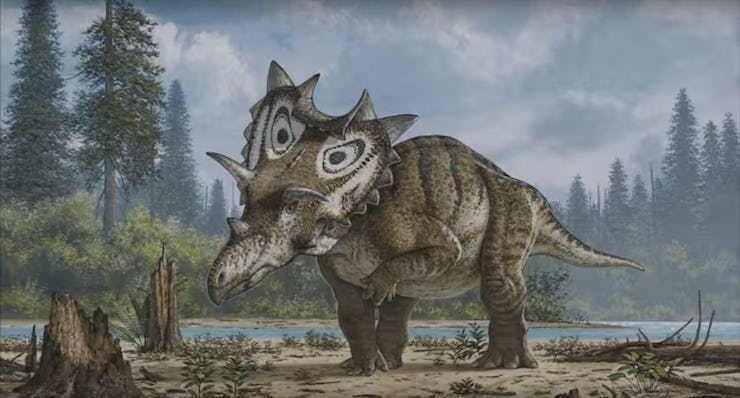Montana Collector Discovers "Judith" Dinosaur, Keeps the Dream Alive for All of Us
First discovered a decade ago, "Judith" now goes on display for the first time.

More than ten years ago Bill Shipp found a femur from something resembling a Triceratops in the badlands of Montana. The accompanying skeleton turned out to belong to a new species entirely. Today, the Canadian Museum of Nature in Ottowa will open the exhibit dedicated solely to those bones that Shipp saw.
Those bones were old and the new species was officially named Spiclypeus shipporum (part of the name honors Shipp, a retired nuclear physicist), but it’s been going by the rather more endearing name of Judith.
The Canadian Museum of nature acquired the bones last year, after which they were eventually identified as belonging to a previously undiscovered species.
Following the initial discovery in 2005, Shipp got to spend the next two years working with a team to excavate the rest of the skeleton. (Or, to put another way, doing what we all expected to happen every time we buckled down to a new sandbox or patch of dirt as children.)
“I found it accidentally on purpose,” Shipp told the Associated Press, as presumably everyone within earshot nodded in complete understanding. “I was actually looking for dinosaur bones, but with no expectation of actually finding any.”
The Montana hillside where Judith was discovered more than a decade ago
Judith gets her name from the Judith River Formation in the region where she was found, though to fully appreciate this you must read the PLOS paper that announced the discovery, which descibes her gloriously as a “Boldly Audacious New Chasmosaurine Ceratopsid (Dinosauria: Ornithischia) from the Judith River Formation (Upper Cretaceous: Campanian) of Montana, USA.”
Judith was a horned dinosaur — like a Triceratops — with “projecting postorbital horncores and conjointly fused, anteriorly curled epiossifications straddling the midline of the frill,” according to the PLOS paper. Her discovery could give scientists better insight into the historical fauna and biostrata of the Judith River Formation area.
Boldly audacious though she surely was, Judith was apparently not the healthiest specimen of Spiclypeus shipporum; the paper details her “poor health” leading up to her death, noting infection and abscesses — possibly sustained in battle — that would likely have resulted in a limp. (Judith also wasn’t necessarily a female specimen, it should be noted.) Nonetheless, the paper bears witness to her bravery: “Despite these impairments, skeletochronology indicates that the animal lived at least 7–10 years, attesting to its robust constitution.”